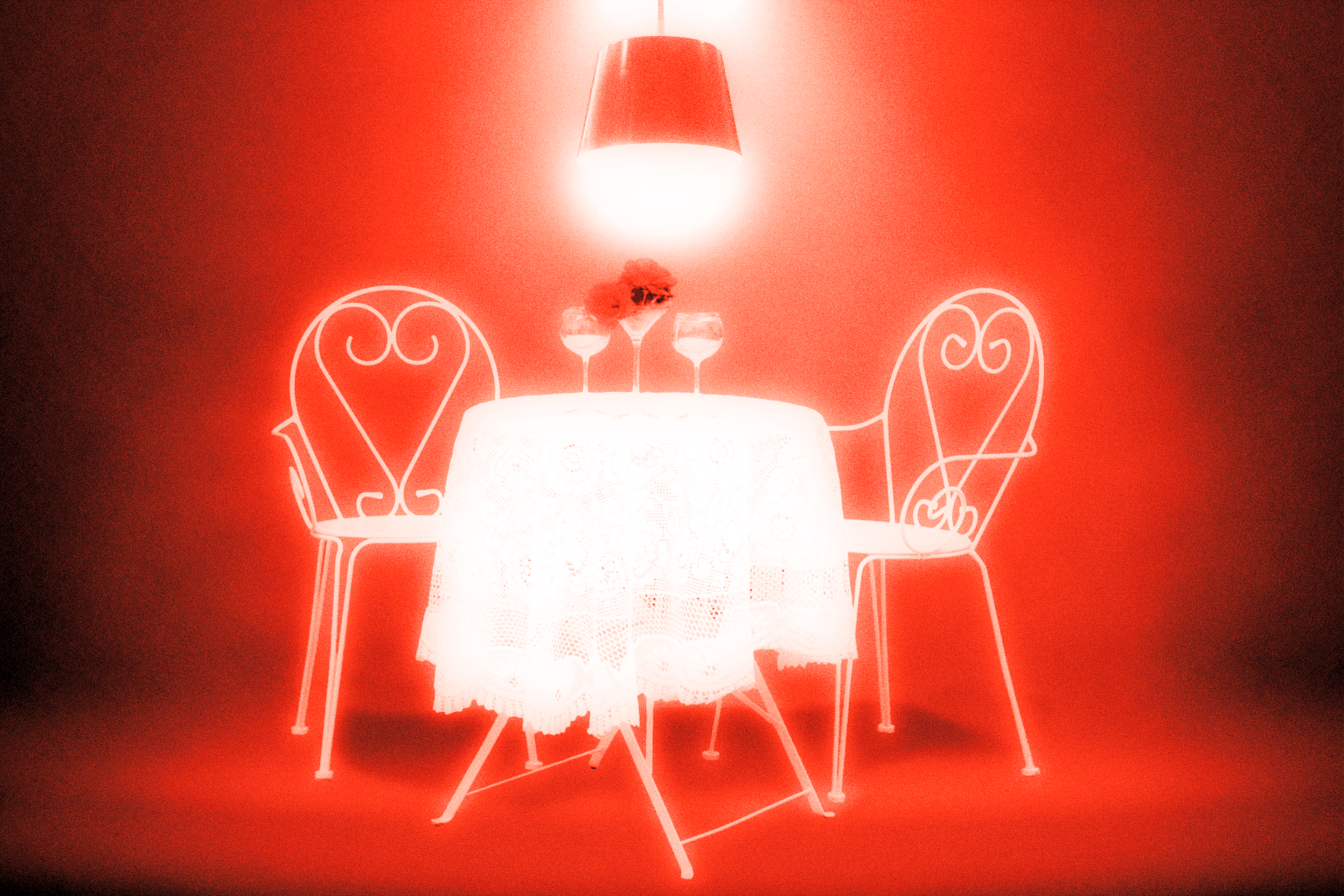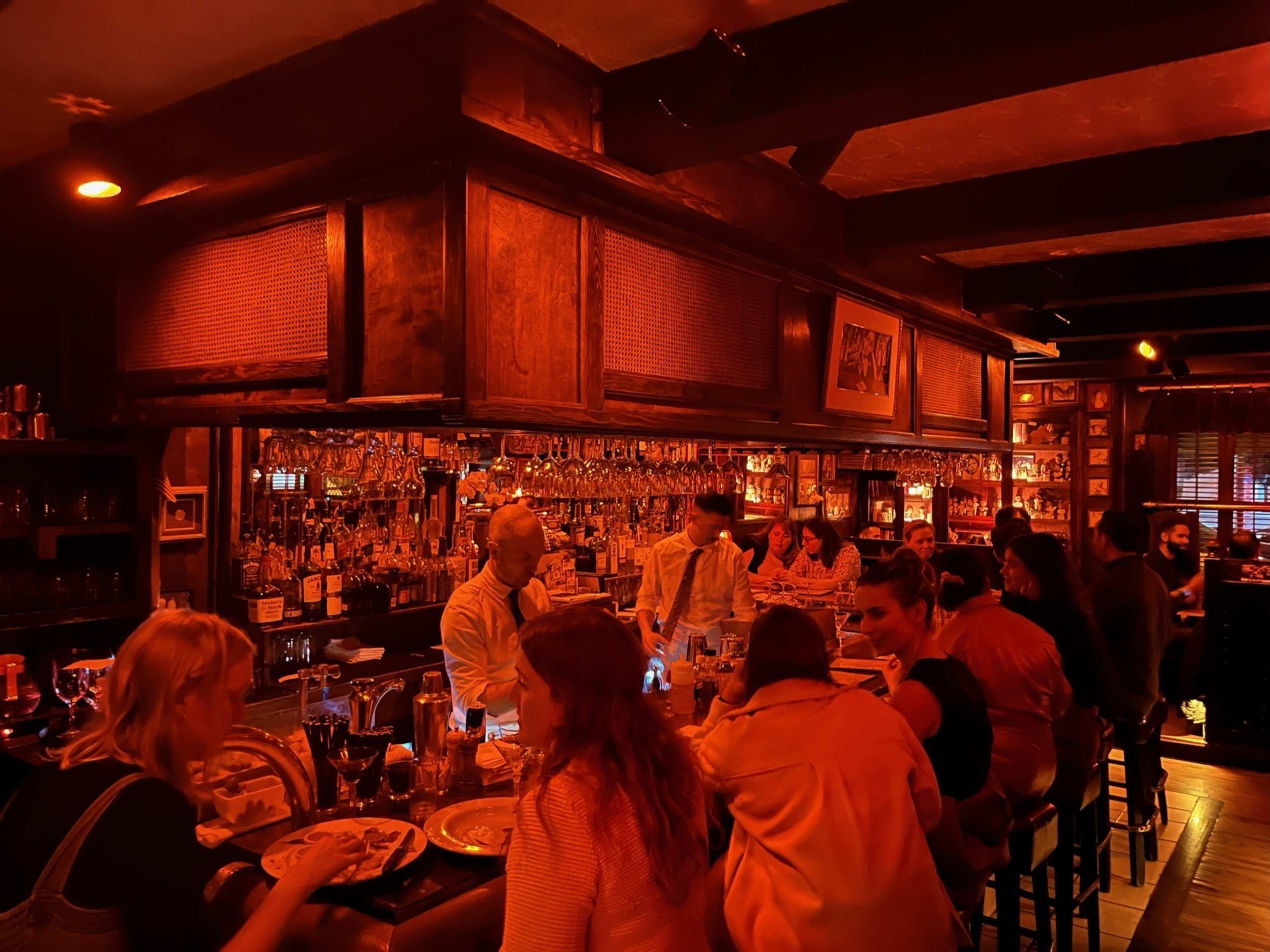The other night, I went to Brazen Head in Cow Hollow. Unlike most restaurants in the city, the 45-year-old self-proclaimed “public house” has zero interest in celebrating the copious California sunlight reflecting off the azure bay.
Instead, the lights envelop you in an orange glow and are dimmed to the edge of utter darkness, giving a Midwestern grandma-level plate of prime rib and baked potato the feeling of something illicit.
Clearly, I’m not the only one to think this. “You can hide in our back corner and no one will see you. We’ve had a lot of people meet each other who weren’t supposed to,” laughed owner Eddie Savino when I asked him about the lighting. “Your secret is safe with us.”
This got me thinking about the magic of lighting and how transportative — even transgressive — it can be. As someone who resolutely refuses to allow any overhead lighting in her house, barring the kitchen, I am a firm believer that lighting sets the mood. Everything else follows.
If you’re at a restaurant, light must never beam down onto your table as it would, say, in a police interrogation. Equally offensive is one-note light that spreads blandly across the room. Even though I’m guilty of taking pictures of my food, the best mood lighting should be just dark enough to curb your compulsion to post anything to Instagram. Honestly, I’d rather the vague humiliation of getting out my reading glasses than be able to easily see the menu.
My sensibilities were confirmed by Keith McNally’s memoir, “I Regret Almost Everything,” released in May. McNally, the founder of some of New York’s most seminal restaurants, including Balthazar, Minetta Tavern, and Pastis, writes that “restaurant design begins and ends with lighting.” He believes that the more side lighting, the more beautiful the room — and the people in it — become.

San Francisco restaurant designer Wylie Price, who began his career in restaurant kitchens before moving into design, concurs. “McNally’s got that formula: yellowed wire-glass sconces, distressed mirrors, subway tile. Soft, dingy, beautiful.”
Price’s San Francisco projects, which include State Bird Provisions, The Progress, and Anchovy Bar, may be very different than McNally’s, but they’re equally thoughtful. “Lighting ends up being so crucial in restaurants because two things are playing against each other,” he said. On the one hand, there’s “the practicality of needing bright kitchen light.” On the other, there’s the need for “moodier light that makes everyone on a date feel comfortable enough to be vulnerable.”
Price subscribes to a “layered technique” — a mix of direct and ambient light, including decorative fixtures like hanging globes, and another layer that’s focused on the actual tables. Not that he wants you to clock any of that. “Sometimes lighting is successful when you don’t notice it at all,” he says. “Just like food — when it’s right, you’re not analyzing the salt and acid. You’re just enjoying it.”
With LED lights, which are not as naturally warm as incandescents, now required by California law, lighting a restaurant to code here has become even more of an art. Energy consultant Travis Wade, principal of Wade Energy (opens in new tab), which helps businesses adhere to Title 24 California Code of Regulations, the state’s master energy rulebook, says the LED options coming out now “are incredible, but you don’t want to buy the cheap stuff.”
He offered up a rule of thumb: Find the maximum wattage your restaurant is allowed to use and work backward. “If you need 1,000 watts, don’t install one blinding fixture. Use 100 10-watt bulbs,” he said. “Spread the light around and you’ll get atmosphere.”
Or feel, as writer Serena Dai put it in her story on McNally (opens in new tab) for The Atlantic. She wrote: “After you try a new restaurant, people typically ask, ‘How was the food?’ I like to ask: ‘How did it make you feel?’” Dai continued: “Bathed in lighting that critics have called ‘McNally Gold’ or a ‘fairytale glow,’ you might feel as though your meal is already a wonderful memory.”
Locally, I would say, Brazen Head is a place to create such memories. Not because of the food, but because of the clandestine shadows and patinated glow. In a city obsessed with natural light, it’s the opposite that often thrills — like you’re having a torrid affair with the dark side of San Francisco.
